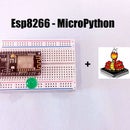Introduction: USB Mini PCB Drill
Electronics are filled with PCBs and Circuits and it is impossible to be good at electronics without having designed your own circuit on a PCB. While Breadboards are good for temporary prototyping the best solution to have good reliable projects its to have your circuit etched on a PCB.
Etching your own PCB is a fairly easy process and there are various methods on how to do that, but you need to drill holes for through hole components, so unless you want to do a full on SMD modeled PCB you will need a drill to drill out the holes on the PCB.
In this instructable I'm going to show you how to build your own PCB Drill.
Step 1: Tools and Components
- DC Motor 5V High RPM and Torque
- PVC Enclose (Or you could also use a PVC Pipe)
- Hot Glue Gun
- Soldering Iron
- Push Button Switch
- USB Male Cable
- Screw Driver
- 2 Way wire Connectors
- Knife
Step 2: Motor Enclosure
First lets start with designing the enclousre for the motor, the circuit for his is really simple the motor is connected in series with the switch which is connected to the USB male connector.
The red and black wire in the USB cable indicates, the positive 5V terminal and the black wire is the ground terminal. Start by marking out where the button goes and then make a slit and cut it out using either a knife or a rotary tool.
Step 3: Initial Testing
After you cut the slit out test out the motors direction you need it to be in the right direction to drill holes so the polarity of the motor matters here. Also make sure everything fits in place and if everything went fine it you can proceed to the next step.
Step 4: Hot Glue
Now that you have got everything working it is time to set everything in place I used hot glue to do that, you can use any non conducting adhesive. Make sure you insulate the wires with some heat sink tubes to prevent any short circuit also add a fly back diode along the terminals of the motors.
Step 5: Testing
After the Glue is dry it is time to test it, to hold the drill bit in place I used a wire connector terminal contacts this can be obtained by cutting open a two way wire connector. Next, you need to screw one end of the wire connector to the drill shaft and the other end to the drill bit.
Now the next time you design your own PCB you would always have your own DIY drill in handy.

Participated in the
Makerspace Contest 2017











